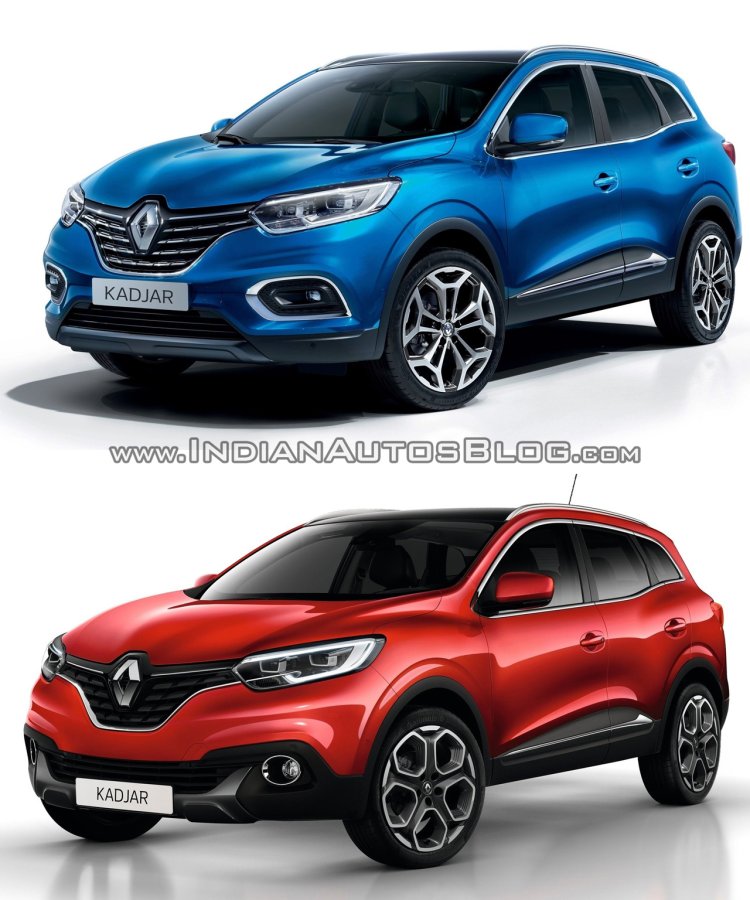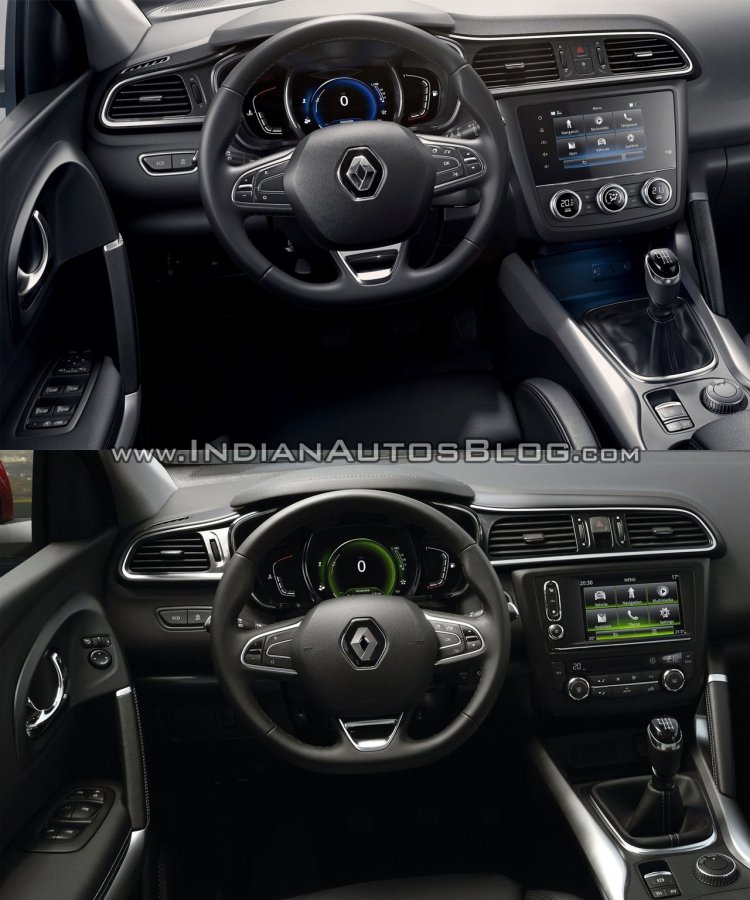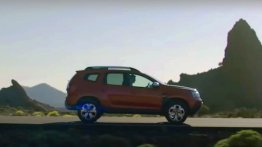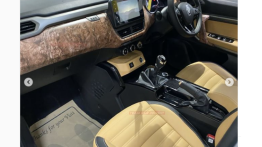The Renault Kadjar, introduced in early 2015 as the brand's first C-segment SUV, has received a facelift. Here's a visual comparison between the models.

The Renault Kadjar has received a subtle visual makeover in its mid-life update. At the front, the designers have integrated LED indicators into daytime running lights, implemented LED Pure Vision technology for the new, slimmer fog lamps built into the bumper, widened the radiator grille and embellished it with chrome inserts and introduced a more stylish bumper with a larger area of body-coloured paintwork.
On the sides, new 17- and 19-inch alloy wheels are available. Changes at the rear include LED turn indicators, LED reversing lights and LED fog lamps, with the latter now slimmer and built into the bumper, which has a new look. Up top, a shark fin antenna has replaced the conventional piece.
Moving to the interior, the biggest change is the more upmarket centre console design. There's a new 7-inch touch screen for the R-Link 2 infotainment system and a new control panel for the automatic climate control system with three thumbwheels. Look closer, and you'll also see completely reworked door inner panels and redesigned seats. Rear air vents now allow passengers in the rear to sit more comfortably. Various new upholstery choices are available.

Also See: Renault Arkana SUV coupe - Walkaround video
The Renault Kadjar adopts the new 1.3-litre TCe turbocharged petrol engine that was co-developed by the Alliance and Daimler. This engine is available in four versions: TCe 140 GPF MT, TCE 140 EDC GPF, TCe 160 GPF MT and TCe 160 GPF EDC. As for the diesel engines, the Blue dCi 115 offers 5 hp and 10 Nm more now, while the Blue dCi 150's maximum power is up by 20 hp.
Renault India is understood to be having no plans to launch the Kadjar or the larger Koleos in the Indian market.

















